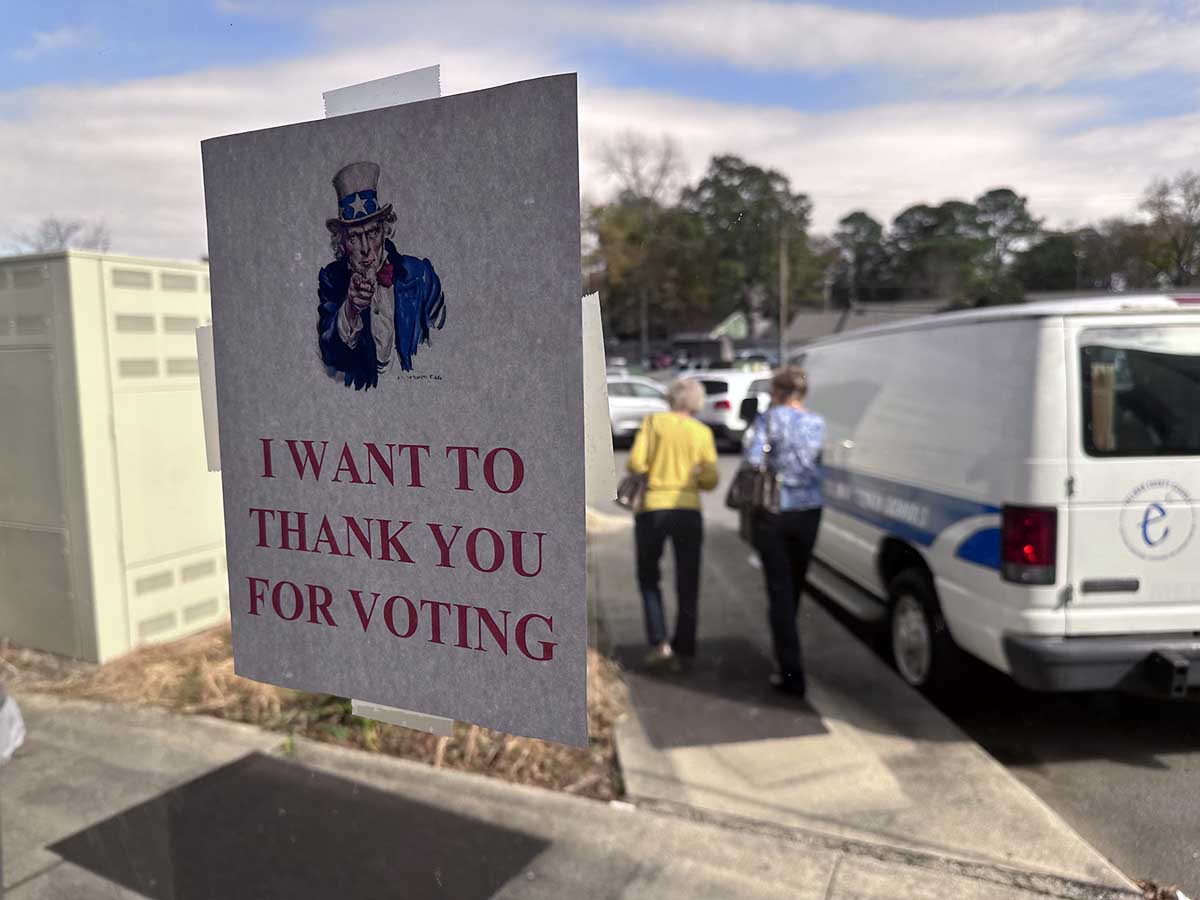Trucking industry in need of workers with drive
Published 5:30 am Sunday, September 7, 2014

- Instructors Jeremy Smith and Bill Mantanane stand next to two of their newest trucks for students at Wallace State Community College. These new trucks are part of the growing diesel and commercial driver’s license programs at the college, which instructors hope will address the growing shortage of drivers nationwide. The yellow truck is affectionately named “Big Bird.”
There is possibly no industry short of agriculture as well-ingrained in the Cullman County economy as long-haul trucking, and, despite how stalwart the industry is in the area, perhaps nowhere else in Alabama has as much at stake regarding the nationwide shortage of truck drivers.
Cullman County is a veritable Mecca for trucking companies.
Trending
“We’re right between the two major cities in Alabama,” Ron Jacobs, safety director at James R. Smith Trucking, said. “Being 45 minutes apart from both puts us in a strategic location.”
The causes for the shortage have been widely debated by local company officials, but there is tremendous agreement that the pool of incoming drivers is severely diminished.
“Qualified drivers are retiring,” Safety Director of My Transportation John Henry said. “Baby boomers are retiring, and there’s no one to replace them.”
Retiring baby boomers are not the only concern for the industry. The causes for disinterest among youth run the gamut of financial worries.
The American Trucking Association reported on July 9, 2014, that the turnover rate at large truckload fleets was 92 percent.
Increasing fuel prices and start-up costs in a still recovering economy also affect the appeal of the industry.
Trending
According to officials at James R. Smith and My Way Transportation trucking companies, a new truck can cost approximately $150,000, which can make leasing it a financial burden on owner-operator drivers.
However, the issues that resonated most deeply with local officials in the trucking industry were time away from home, the image of the trucking industry and state and federal regulations
“Driver shortages are also due to government regulations,” Henry said. “It makes new drivers not want to enter the industry.”
Those regulations include standards by the Department of Transportation and the Federal Motor Carrier Safety Administration that govern driver fitness, hours drivers spend on the road, driver history and other aspects of commercial driving.
Despite the new stringent regulations of driver history and health, 25-year-veteran Swift Transportation driver Jerry Brown said the regulations were welcome.
“It’s all about safety,” he said. “You’re driving an 80-ton missile, and I agree with strict regulations. The real issue is understanding the industry — people aren’t actively engaged in knowing their options.”
Tim Fraizer, the director of safety and member services at the Alabama Trucking Association, echoed Brown’s latter sentiment.
“There are several misconceptions about the trucking industry,” he said. “Folks like to be home, and a lot of people don’t feel like they can be.”
Frazier said that family life and trucking were very compatible. He also added that there was a mistaken idea floating around about salary.
“You can make a good living in this industry, but some people don’t think you can,” he said. “Volume and success have a lot to do with one another.”
According to James R. Smith Trucking Company, drivers can expect to make anywhere between $35,000 to $65,000.
On top of those occupational misconceptions, Jacobs said the image of the industry can be detrimental to recruiting new drivers.
“That’s one of the primary issues — image,” he said. “The image has been tarnished.”
Jacobs said that the prevailing role of trucking in the U.S. is often portrayed as unwholesome.
“A lot of it is because of CB radios,” he said. “We have a reputation from the ‘70s and ‘80s, and we need a nationwide campaign to fix that. We have nothing out there pulling people into the industry, and the country is at risk for not being able to move the freight it needs to.”
Jacobs said an advertising campaign clarifying the life of a trucker could be the best way to attract new recruits.
His opinion was not uncommon. Jacobs, Henry and Fraizer all insisted that there was money to be made in the industry, but the younger generations were either uninformed or unaware of the legitimacy of the career path.
Despite these issues, Henry and Jacobs agreed that their companies were not severely suffering from the shortage.
“We’re more appealing than other companies,” Henry said. “We offer 48 consecutive hours of home time, and we have only a 27 percent turnover rate.”
Jacobs did say, however, his company was not satisfied with stability alone.
“We would like to be able to grow,” he said. “But it seems to me we have no 25 to 30 year olds entering the industry. We are in the same ship we’ve been in for years.”
Drivers at local companies in Cullman County are often home on the weekends and can take more localized routes. Those perks, however, are not readily accessible for new drivers because of local companies’ hiring practices.
“Local companies are hesitant to hire non-experienced drivers,” Fraizer said. “We have to back up and rethink. We have to get creative.”
Local trucking company jobs are coveted because of their perks, but soon local trucking companies may have no other place to turn other than new drivers.
Fraizer said that drivers must be 21 to receive a commercial driver’s license. Furthermore, he added that drivers are usually required to have three years of on-the-road experience to work at many companies.
“You must be 21 at least to do long-haul trucking,” he said. “It’s hard to convert kids to the jobs. That’s at minimum three years after turning 18 — they’ve already found other things to do.”
Jacobs seconded Fraizer’s statements.
“You have to be 23 to 25 usually to get a good trucking job,” he said. “The only people who can afford to hire inexperienced drivers are self-insured, larger companies.”
Jacobs said he believes the “creative” answer begins in education.
“There ought to be demand for truck driving schools to be set up better,” he said. “Three or four weeks of school doesn’t prepare drivers for the road. Most of that time is spent with written testing.”
Wallace State Community College offers a commercial driver’s license test as well as other diesel-based opportunities.
“We’re the industry that carries America,” Jeremy Smith said. “Everything you see around you came out of a truck in the trucking industry.”
Smith is the diesel department chairman at Wallace State Community College. He knows as well as anyone about the nationwide shortage in the trucking industry.
“The people in skilled trades are aging and retiring,” he said. “We have to attract young people.”
Part of the college’s plan to attract new candidates and contribute to solving the driver shortage is a new program. Plans to incorporate a short-term certificate program for credit hours is in place.
“We know that some interested parties can’t afford the tuition,” Dean of Institutional Outreach Melinda Edwards said. “If we get a short certificate program for credit hours, students will be able to qualify for grants and financial aid.”
Smith said that partnering with local trucking companies was key to the success of an additional program.
“The only option for hiring people is going to become inexperienced drivers,” he said. “We need to find out what they want, so our drivers can be prepared.”
Wallace State’s current tuition for the commercial driver’s license program will cost students $2,781.
Those who can afford the tuition will make returns on it according to program instructor Ben Mantanane.
“Drivers can expect to make 26 cents to 43 cents a mile at trucking company,” he said. “You make a lot of money based off work ethic. You can expect to earn somewhere between $35,000 and $45,000.”
Mantanane added that several recruiters from larger trucking companies come to meet students in the program because of nationwide demand.
“Most of our students commit to a company before graduating,” he said.
In addition to incorporating a new program, Wallace State is beginning the process of improving their training facilities.
One student testing at Wallace State has embraced the romantic side of trucking.
“I wanted to experience it,” Frent Hall said. “I always liked driving, so I figured I might as well drive. Me being away from home is time for myself — it’s a new experience.”
Both Mantanane and Smith did not hide that the industry can be tough, but still fulfilling.
“You have to earn your place in local jobs,” Mantanane said. “You can’t be guaranteed every weekend in the trucking industry, and people need to understand that. But there is a good living to be made for those who put enough in.”





